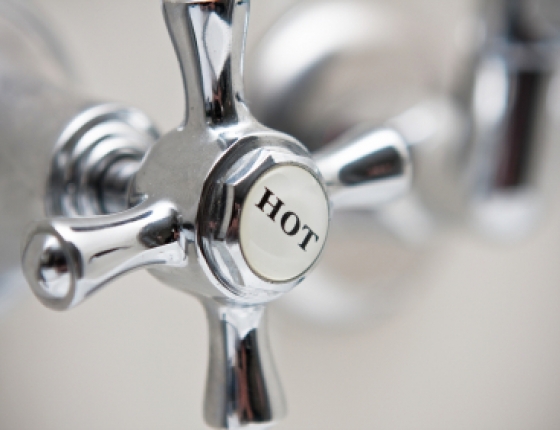Water heating is the second largest end use of natural gas in homes in the United States, accounting for 24% of residential use (D&R International 2006). Water heating is also typically one of the least efficient end uses—the federal minimum efficiency (energy factor, or EF) is 0.59 for a typical 40-gal. water heater. Therefore, more efficient water heating technology has the potential to provide large natural gas savings. High-performance water heaters are typically more time consuming and costly to install in retrofit applications (National Renewable Energy Laboratory 2014), making high-performance water heaters difficult to justify economically. However, recent advancements in high-performance water heaters have targeted the retrofit market, simplifying installations and reducing costs.
Several manufacturers have developed systems to target the high-efficiency retrofit market. These manufacturers have performed extensive laboratory testing, but they are typically unable to conduct fully-monitored field tests under real occupant loads. Field-testing can demonstrate real-world potential and performance as well as show that a product meets the need for a retrofit condensing gas water heater. Field tests can also be used to identify comfort issues or to demonstrate that any comfort issues were successfully addressed for a given product.
The U.S. Department of Energy’s Building America team NorthernSTAR has worked with one of these manufacturers on past projects, and the manufacturer was interested in having NorthernSTAR conduct field tests on their newest equipment. Four high-efficiency natural gas water heaters (WH 1, 2, 3, and 4, shown in Table 1) designed specifically for retrofit applications were installed in single-family homes along with detailed monitoring systems to characterize their savings potential, installed efficiencies, and abilities to meet household demands.
To be considered for this project, each water heater was required to have a combination of a high input, energy-efficient gas burner, some hot water storage capacity, and compatibility with a ½- in. gas line. The project assessed the impact of smaller gas lines on the overall cost-effectiveness of the installed units. Field data were also used to analyze the impact on hot water quality, especially the benefits of hot water storage (such as reduced cold water sandwich, delay until hot, and low-flow performance), and the impact of the reduced gas line on capacity.
The water heaters tested for this project were designed to improve the cost-effectiveness and increase market penetration of high-efficiency water heaters in the residential retrofit market. The retrofit high-efficiency water heaters achieved their goal of reducing costs, maintaining savings potential and installed efficiencies compared to other high-efficiency water heaters, and meeting the necessary capacity to improve cost-effectiveness. However, the improvements were not sufficient to achieve simple paybacks of less than 10 years for the incremental cost compared to a minimum-efficiency heater. In most cases the paybacks were as long as or longer than the expected lifetime of the water heater (12 to 20 years). Significant changes would be necessary to reduce the simple payback to 6 years or less.
-
Incremental costs less than $400 would have paybacks of 6 years but would require a large reduction in the water heater equipment cost or a change in the baseline water heater installation.
-
Annual energy savings in the range of $200 would also reduce paybacks to less than 6 years, but these energy savings would require either significantly higher fuel costs (greater than $1.50 per therm) or very high usage (around 120 gal. per day [gpd]).
-
For current incremental costs, the water heater would need an efficiency in excess of 200% to deliver a 6-year payback.
Final Report
